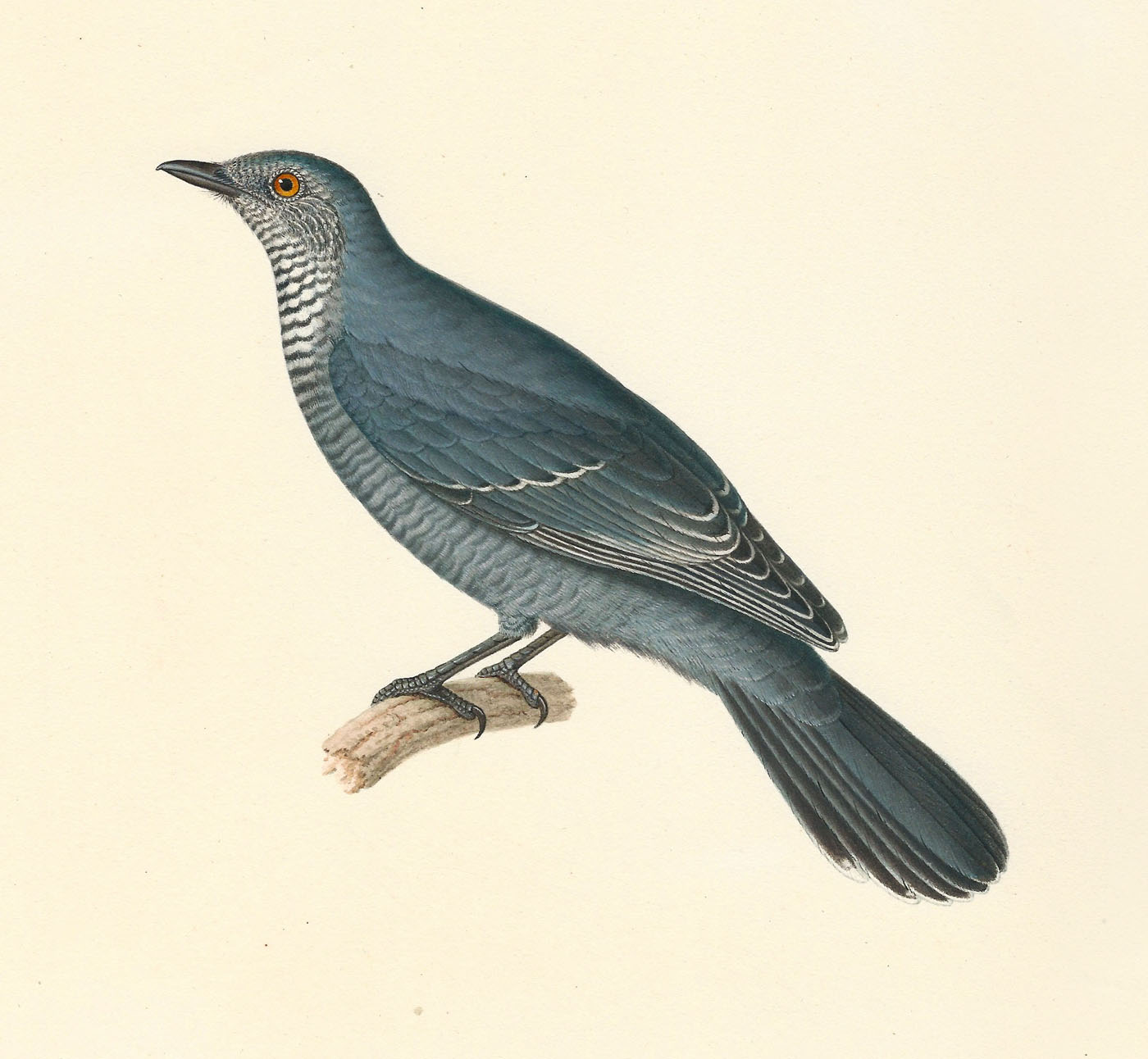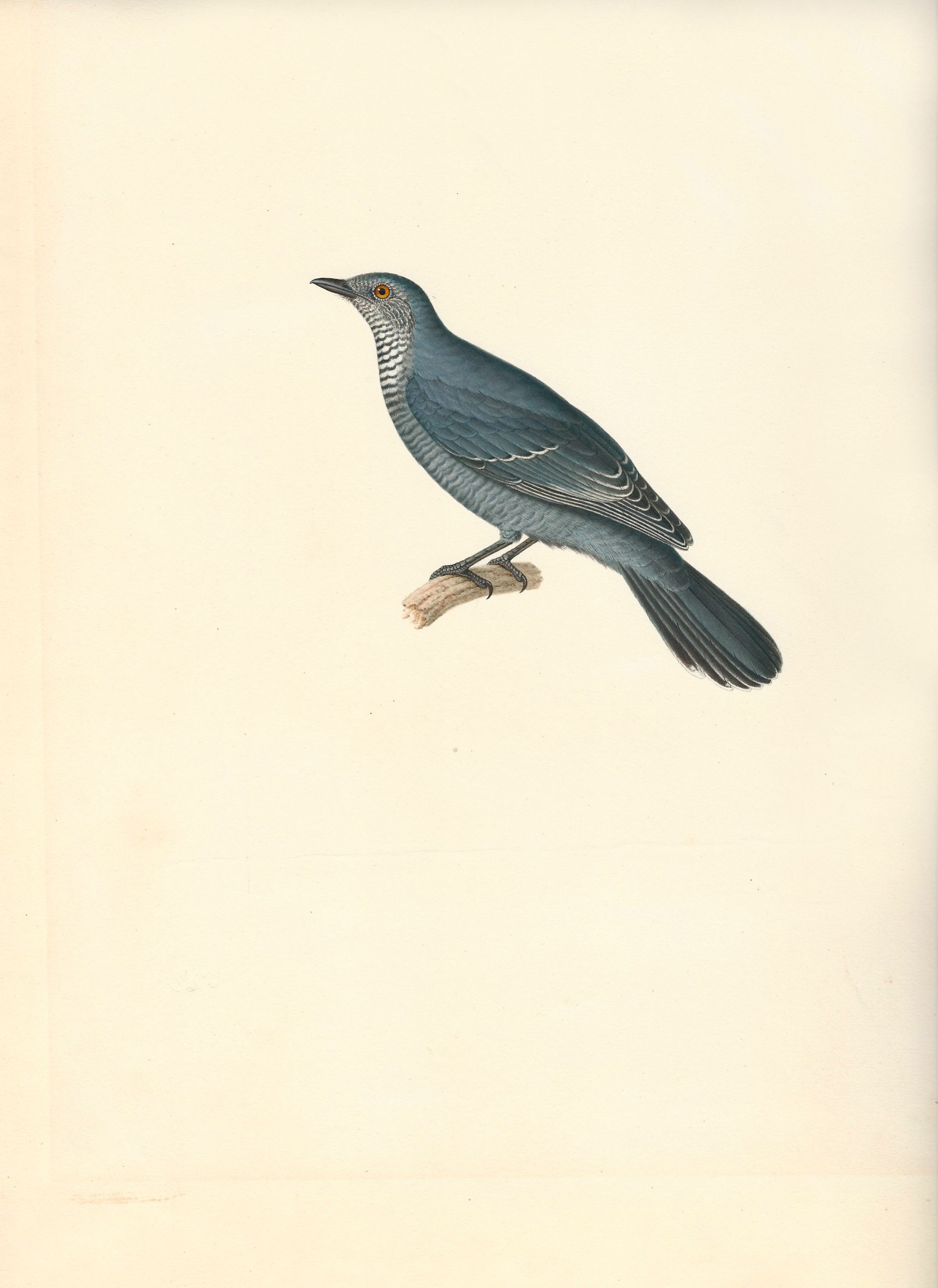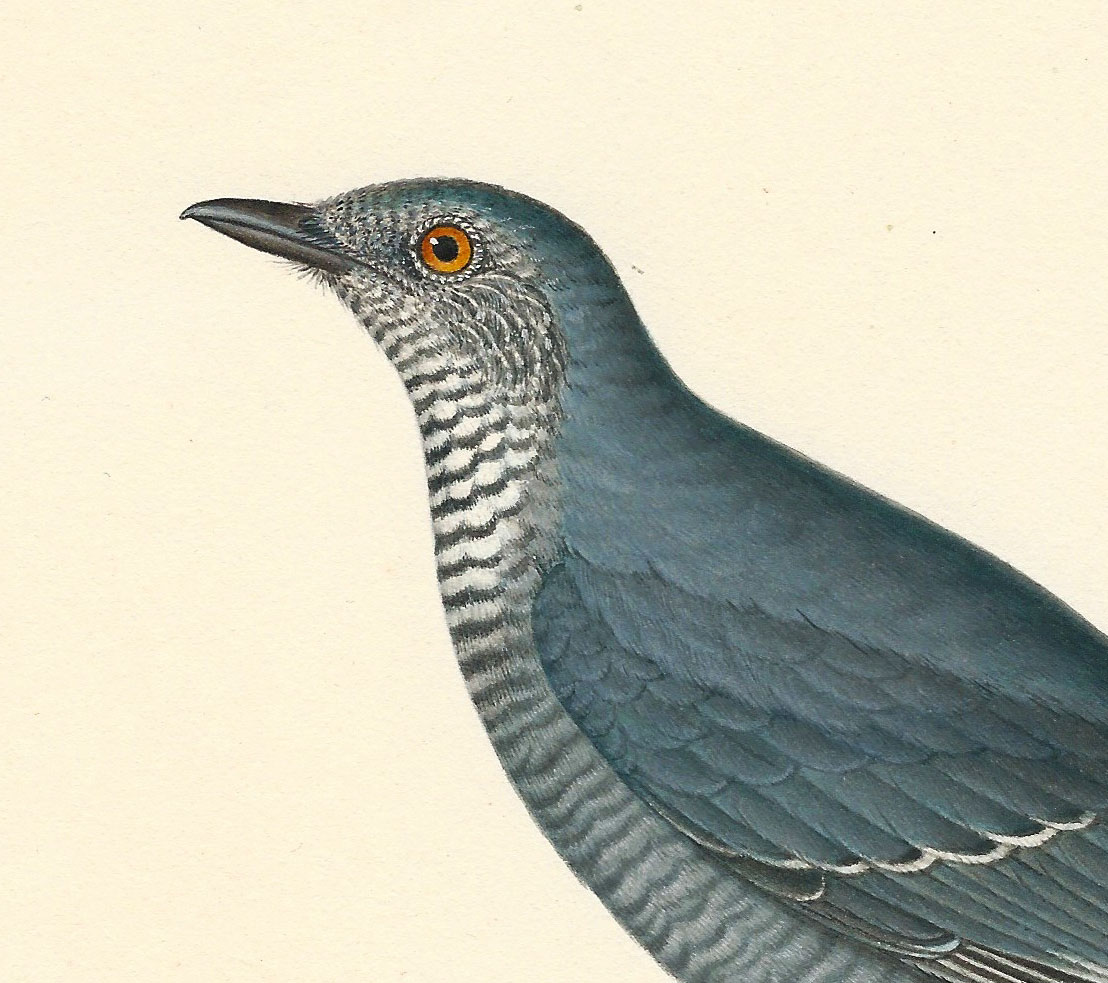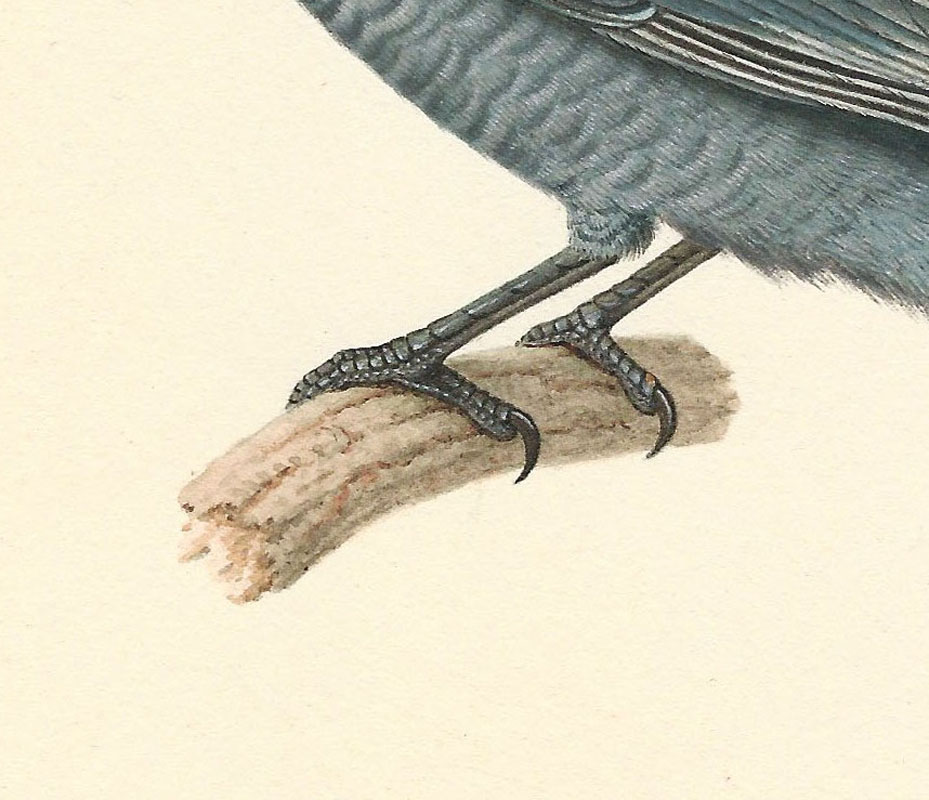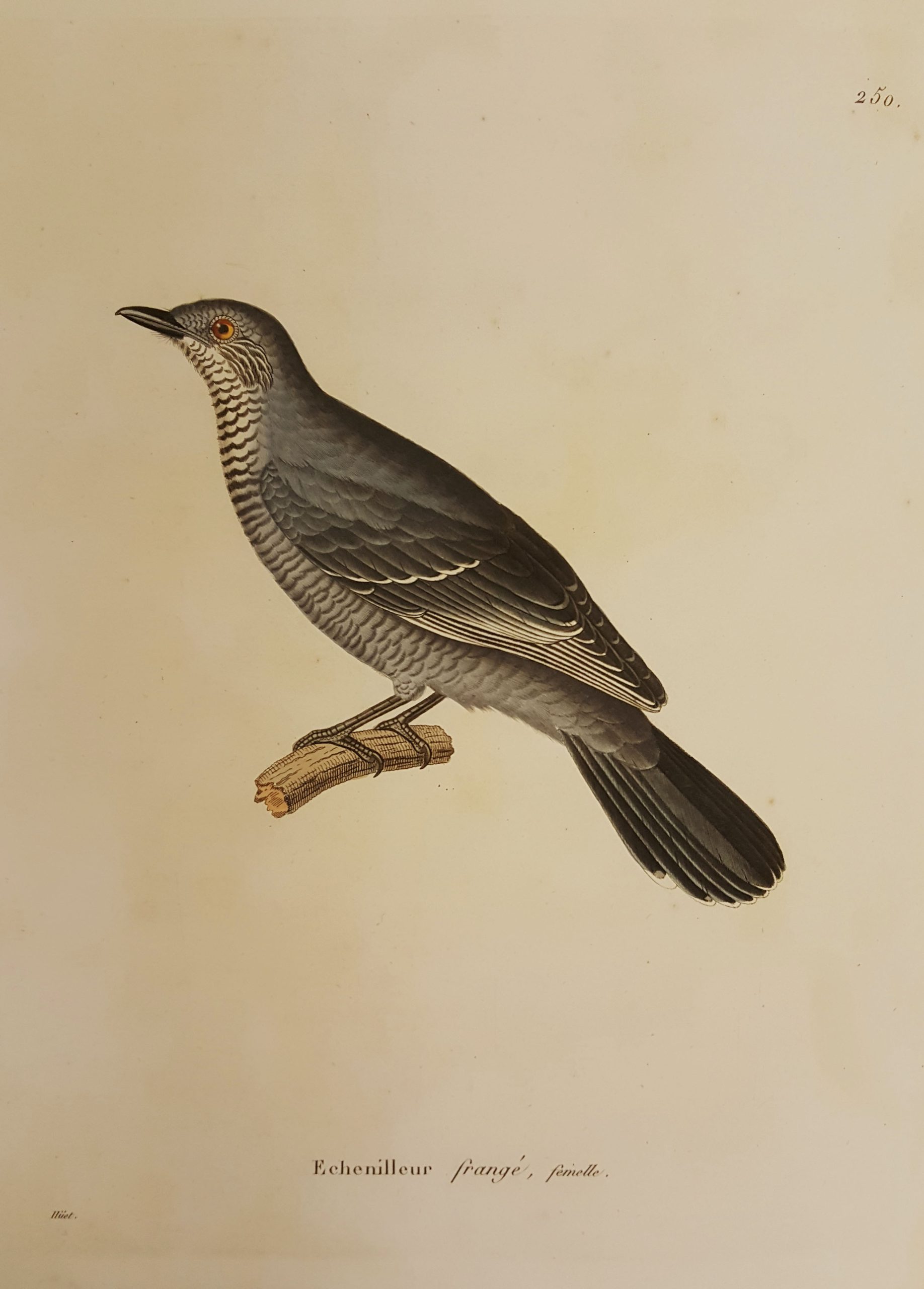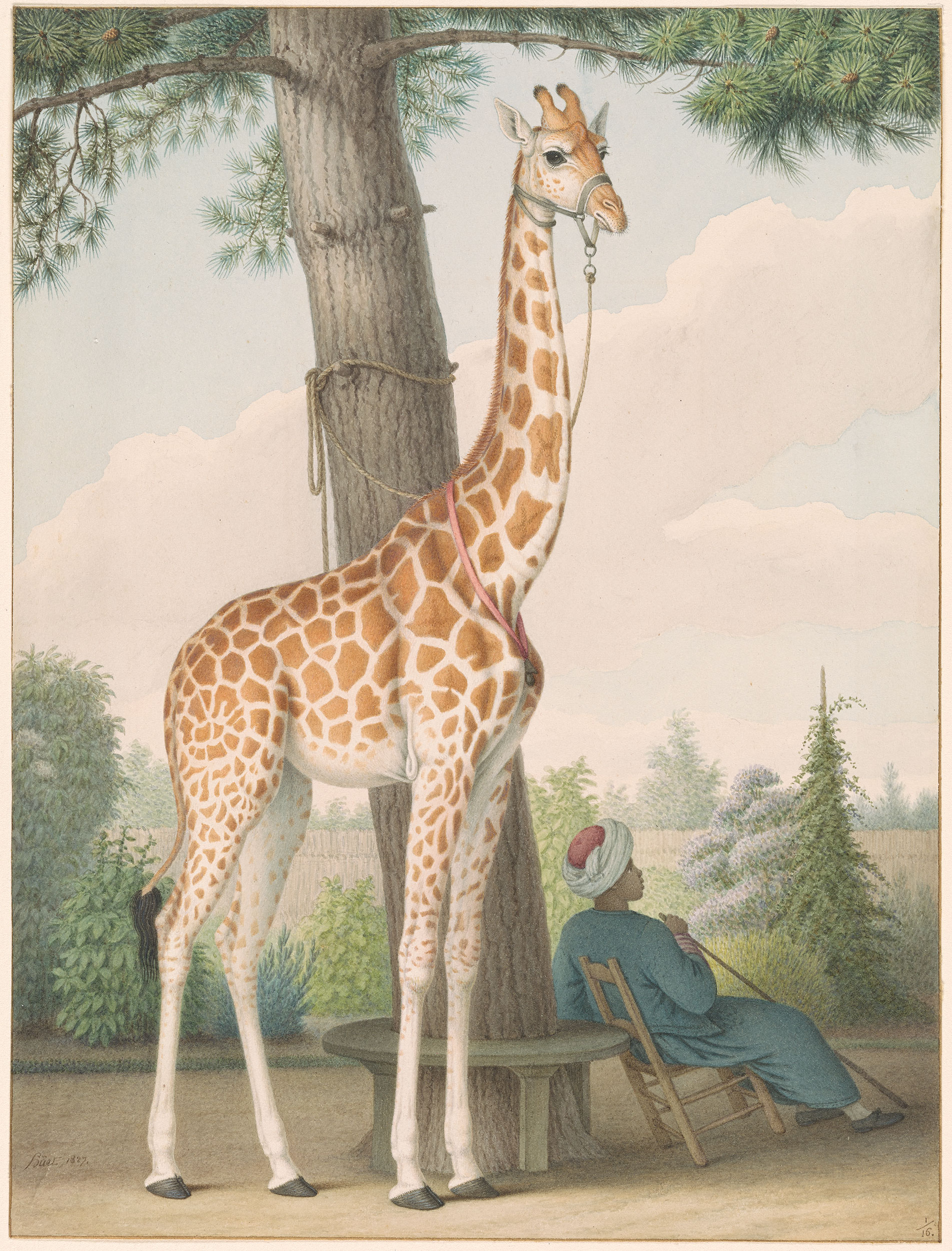NICOLAS HUET II (Paris 1770-1828 Paris)
Nicolas Huet II (Paris 1770 - 1828 Paris)
A Female Lesser Cuckooshrike on a Branch
Pencil, watercolour, bodycolour, on wove paper, sheet size 486 x 342 mm (19.1 x 13.5 inch); dimensions of bird 130 x 145 mm (5.1 x 5.7 inch)
Provenance
~ Comte Henri Coustant d’Yanville (1826–1882)
~ Daniel de Granges
~ With Nystad Antiques, Lochem, The Netherlands, ca. 1980
Engraved
C.J. Temmink and M. Laugier de Chartrouse, Nouveau Recueil de Planches Coloriées d'oiseau, 1820-39, vol. III, plate 250
***
Nicolas Huet was born in the Louvre as the son of the painter Jean-Baptiste Huet I (1745–1811), who worked in the Palace. Jean-Baptiste also fathered the artists François Huet (1772–1813) and Jean-Baptiste Huet II (1772–1852).1 The artist was named after his grandfather, the animalier Nicolas Huet I. Nicolas was something of a prodigy and as early as 1788 exhibited at the Exposition de la Jeunesse at the Place Dauphin. The young Nicolas took part in Napoleon’s scientific and artistic expedition to Egypt between 1798 and 1801, and made his Salon debut in 1802 with several animal pictures. In October 1804 he was appointed official painter of the Musée de l’Histoire Naturelle in Paris, and of the exotic zoo of Empress Joséphine, Napoleon’s first wife. Founded in 1793, the Paris museum of natural history was one of the earliest institutions of its kind, and Huet produced hundreds of finely detailed watercolours of animals in its collections.
Among Huet’s most significant works were a series of 246 elaborate drawings on vellum - studies of mammals, reptiles, birds, insects and sea life - for the library of the Muséum d’Histoire Naturelle, published in 1808 as 'Collection de mammifères du Muséum d’Histoire Naturelle'. From 1823 until his death Huet served as Professeur d’iconographie des animaux, and he continued to exhibit at the Salons until 1827, showing mainly drawings and watercolours of animals. Apart from his official duties, Huet also made elaborate drawings of animals, usually on vellum, for private collectors such as King Friedrich Augustus II of Saxony, the military officer André Masséna, Prince d’Essling and Duc de Rivoli, and others.
This charming watercolour of a female lesser cuckooshrike (Coracina fimbriata), indigenous to South-East Asia, in particular to Indonesia. The bird formed part of the collection formed by the Parisian Guillaume politician and ornithologist Michel Jerome Meiffren Laugier Baron de Chartrouse (1772–1843). Together with Coenraad Jacob Temminck (1778–1858), founder and first director of the Natural History Museum in Leiden, he published his collection of eight hundred birds, illustrated by six hundred coloured plates, as the Nouveau Recueil de Planches Coloriées d'oiseau, sumptuously published in Paris in six folio volumes between 1820 and 1839 at the Imprimerie Royale.
Chartrouse and Temminck commissioned Nicolas Huet and Jean-Gabriel Prêtre (fl. 1800-1840) to produce the highly detailed watercolours after which the aquatint prints of the publication were made. The present watercolour served as the model for the aquatint published as plate 250 in volume III, in which the artist is identified as ‘Huet’ (fig.). The accompanying text identifies the species as ‘Ceblephyris fimbriatus’, named by Temminck himself, noting that it is encountered on Java, Banda and Sumatra (fig.). Nowadays the species is known as Coracina fimbrata.2 The male of the bird is depicted in plate 249. Although Huet must have made hundreds of watercolours of birds for the project, not very many are known today. One of Huet’s most charming watercolours is the Giraffe Given to Charles X by the Viceroy of Egypt in the Morgan Library in New York (fig.).3
SOLD
1. For the artist, see: C. Gabillot, Les Huët. Jean-Baptiste et ses trois fils, Paris 1892, pp. 130-138.
2. I am grateful to Klaas Post and Kees Moeliker of the Rotterdam Natural History Museum for this information.
3. Black chalk, watercolour, bodycolour, 254 x 194 mm; signed and dated ‘hüet 1827’; inv. no. 1994.1.
